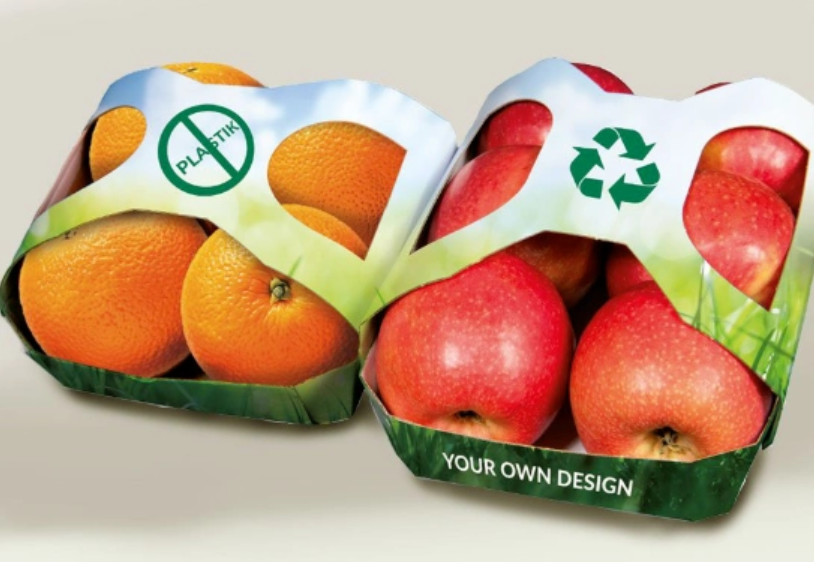Applications of Graphene in Food Packaging
Food packaging plays a vital role in maintaining the quality, safety, and shelf life of food products. With growing consumer demand for eco-friendly, safe, and effective packaging materials, graphene has emerged as a revolutionary material. Its unique properties, such as high strength, exceptional barrier performance, and antimicrobial capabilities, offer transformative solutions to current challenges in food packaging. This article explores how graphene is being applied in food packaging to enhance performance and address critical industry needs.

1. Properties of Graphene for Food Packaging
Graphene’s exceptional characteristics make it ideal for advanced food packaging materials:
- Barrier Properties: Graphene is highly impermeable to gases, moisture, and other contaminants, protecting food from spoilage.
- Antimicrobial Activity: Prevents the growth of bacteria and fungi, enhancing food safety.
- Mechanical Strength: Provides durability and resistance to physical damage during transportation and handling.
- Thermal Stability: Maintains its properties under varying temperatures, making it suitable for refrigerated and heated environments.
- Eco-Friendly Potential: When combined with biodegradable materials, graphene-based packaging aligns with sustainability goals.
2. Applications of Graphene in Food Packaging
2.1 Barrier Films for Extended Shelf Life
- Current Challenges:
- Conventional packaging materials like plastics allow small amounts of oxygen or moisture to penetrate, leading to spoilage.
- Graphene’s Role:
- Graphene layers create an almost impermeable barrier, significantly reducing gas and moisture transmission rates.
- Practical Uses:
- Vacuum Packaging: Ideal for meat, cheese, and other perishable products.
- Modified Atmosphere Packaging (MAP): Maintains controlled oxygen levels for fresh produce, prolonging freshness.
2.2 Antimicrobial Packaging
- Graphene’s Antimicrobial Properties:
- Graphene oxide (GO) and reduced graphene oxide (rGO) have been shown to inhibit bacterial growth by damaging microbial cell membranes.
- Applications:
- Active Packaging: Packaging that actively interacts with food to prevent microbial contamination.
- Self-Sterilizing Films: Graphene-coated films that maintain hygiene during storage and transportation.
- Smart Packaging: Incorporating graphene-based sensors to detect and neutralize harmful microbes.
2.3 Sensors for Food Quality Monitoring
- Graphene-Based Sensors:
- Highly sensitive to changes in temperature, humidity, and the presence of gases like ammonia, a common indicator of spoilage.
- Applications:
- Freshness Indicators: Real-time monitoring of food quality to alert consumers or retailers.
- Leak Detection: Identifies compromised packaging before spoilage occurs.
- Temperature Tracking: Ensures food safety during cold chain logistics.
2.4 Eco-Friendly Packaging Alternatives
- Graphene in Biodegradable Materials:
- Enhances the properties of natural polymers like cellulose and starch, making them stronger and more moisture-resistant.
- Applications:
- Sustainable Packaging Solutions: Alternatives to single-use plastics that degrade without harming the environment.
- Compostable Packaging: Food-safe packaging that breaks down in natural conditions.
2.5 Smart and Interactive Packaging
- Graphene’s Electrical Conductivity:
- Enables the creation of smart packaging that interacts with users or connected devices.
- Applications:
- QR Code Displays: Dynamic displays powered by graphene layers provide information about product freshness or origin.
- Temperature-Sensitive Labels: Change color to indicate improper storage conditions.
3. Integration Methods in Packaging Materials
3.1 Coating Technology
- Graphene films can be applied as coatings on existing packaging materials, enhancing their properties without adding bulk.
3.2 Composite Materials
- Blending graphene with polymers like polyethylene or polylactic acid creates high-performance composite packaging materials.
3.3 Nanostructured Layers
- Creating multilayered graphene-based films maximizes barrier and antimicrobial effects while remaining lightweight.
4. Advantages Over Conventional Materials
- Enhanced Food Safety: Protects against contamination by microbes and external pollutants.
- Reduced Food Waste: Extends shelf life and freshness, minimizing spoilage.
- Sustainability: Potential to replace plastics with biodegradable, graphene-enhanced alternatives.
- Cost Efficiency: Though graphene production remains expensive, ongoing innovations promise scalable and affordable solutions.
5. Challenges and Limitations
5.1 Cost of Production
- Large-scale, cost-effective production of graphene remains a challenge.
- Efforts are underway to develop low-cost synthesis methods like liquid-phase exfoliation.
5.2 Regulatory Approval
- The safety of graphene in direct food contact needs to be rigorously tested and approved by regulatory authorities.
5.3 Integration with Existing Systems
- Retrofitting graphene-enhanced packaging solutions into current manufacturing lines may require significant investment.
6. Future Directions
6.1 Scaling Up Production
- Advances in graphene production, such as roll-to-roll manufacturing, will reduce costs and increase accessibility.
6.2 Wider Adoption of Smart Packaging
- The integration of graphene sensors into mainstream packaging will become increasingly common, benefiting both consumers and supply chains.
6.3 Sustainable Innovations
- Combining graphene with natural materials will enable the creation of fully recyclable or compostable packaging solutions.
6.4 Industry Partnerships
- Collaboration between graphene manufacturers, packaging companies, and food producers will drive innovation and adoption.
7. Conclusion
Graphene’s extraordinary properties are transforming the food packaging industry by addressing critical challenges in food preservation, safety, and sustainability. Its applications in barrier films, antimicrobial packaging, sensors, and eco-friendly materials promise to enhance food quality while reducing waste. While challenges like cost and regulatory hurdles remain, ongoing advancements in graphene technology and material integration are paving the way for a future where graphene-based packaging becomes an industry standard. As these innovations scale, they will not only meet consumer demands but also contribute to a more sustainable and efficient food supply chain.

